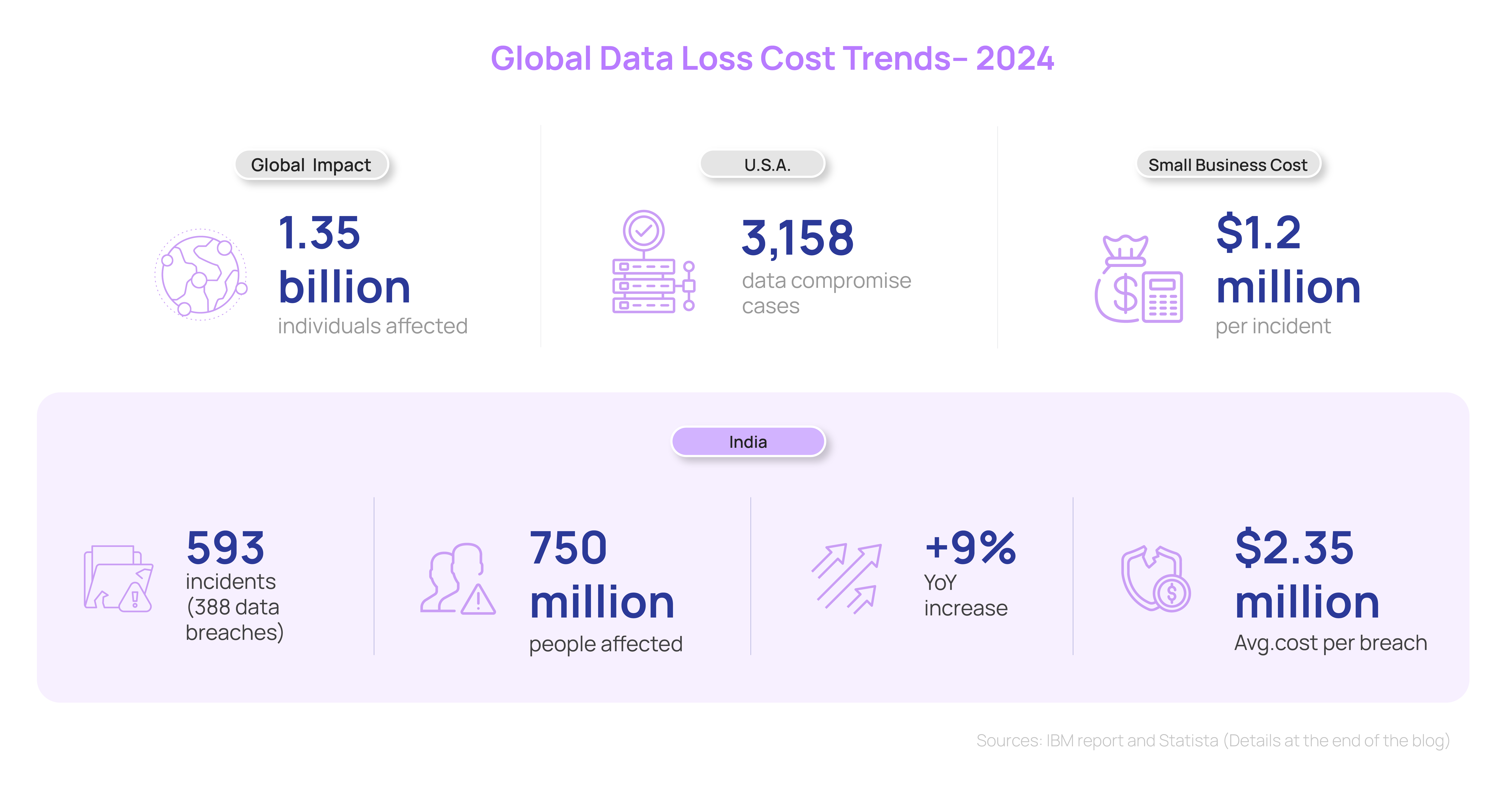Data runs today’s businesses. It shapes your strategy, fuels decisions, and powers services. On the one hand, data represents endless opportunities for businesses to drive informed decision-making, but it also exposes them to unforeseen threats. Losing data today can cost enterprises more than money, and the long-term impact can be scathing.

A Data Loss Prevention (DLP) strategy is a must to prevent such fallouts and act as your shield against data breaches. Cyber threats, complex regulations, and plain old human errors create opportunities to put sensitive information at risk. That’s why DLP plays such a vital role. It protects data proactively.
Why DLP is No Longer Optional
Here are six compelling reasons why DLP has become a cornerstone of modern cybersecurity strategies:
Preventing Data Breaches
DLP lays down adequate provisions for responses in the event of a breach through an incident response plan, which includes the time of the incident, ways to report it, and ways to recover from it. A well-designed incident response plan can help organizations identify loopholes within a network ecosystem early, allowing the implementation of damage control measures proactively before an actual breach takes place.
Ensuring Regulatory Compliance
Data protection laws, such as GDPR, HIPAA, and PCI DSS, require organizations to be compliant. Non-compliance can lead to hefty fines and legal consequences. DLP enforces the proper measures to ensure that data access and usage is adequately governed across all endpoints. DLP notifies network admins in the event of malicious activities when an external entity tries to extort or transfer classified information and creates a repository of security records for compliance audit trails.
Protecting Intellectual Property (IP)
Your IP is the core of your business. Whether product designs, research, or proprietary code, it makes your business unique. DLP allows organizations to set explicit user access permissions, which ensure that only individuals with the correct credentials can access data. By monitoring user access patterns, network admins can identify suspicious access attempts early, thereby reducing the chances of potential breaches.
Mitigating Insider Threats
Not all threats come from the outside. Employees might send sensitive data to the wrong recipient or act with malicious intent. After data classification, DLP enforces stringent security policies such as activity logging, role-based access, and encryption to prevent unauthorized data usage.
Gaining Visibility and Control
Many organizations lack visibility into their sensitive data and its usage. DLP gives you a clear picture of how data flows across your systems, helping you set the proper guidelines and maintain control. Visibility on where the data resides can help organizations maintain incremental data security.
Building Customer Trust
Today’s customers care deeply about privacy. By implementing strong data protection with DLP, you show customers you take their privacy seriously, building lasting trust that sets you apart from the competition.
Why DLP Is a Business Enabler?
Besides helping safeguard critical data and safeguarding organizations from the impact of data breaches, a robust DLP strategy can offer several far-reaching benefits, such as:
Increased productivity
By preventing disruptive data losses that impact daily operations, DLP can help businesses increase team productivity. For small and mid-sized organizations, opting for managed DLP services can again result in greater productivity improvements and cost savings.
End-to-end compliance
Organizations can be well-placed to successfully adhere to the constantly changing global data protection laws and regulations with the help of a robust DLP strategy. It can ensure that companies have the right systems in place to safeguard data and the right policies to ensure adequate governance and audit of data usage.
Seamless user access management
DLP strategies assist network administrators in strictly defining usage of access to data, which helps prevent unauthorized data access and uphold data integrity. This eventually results in heightened customer trust.
Conclusion
Organizations cannot eliminate every data risk, but they can prepare for it with a strong DLP strategy. This helps organizations follow a phased and straightforward risk identification and mitigation process, protecting what that matters most while supporting compliance, productivity, and trust.






